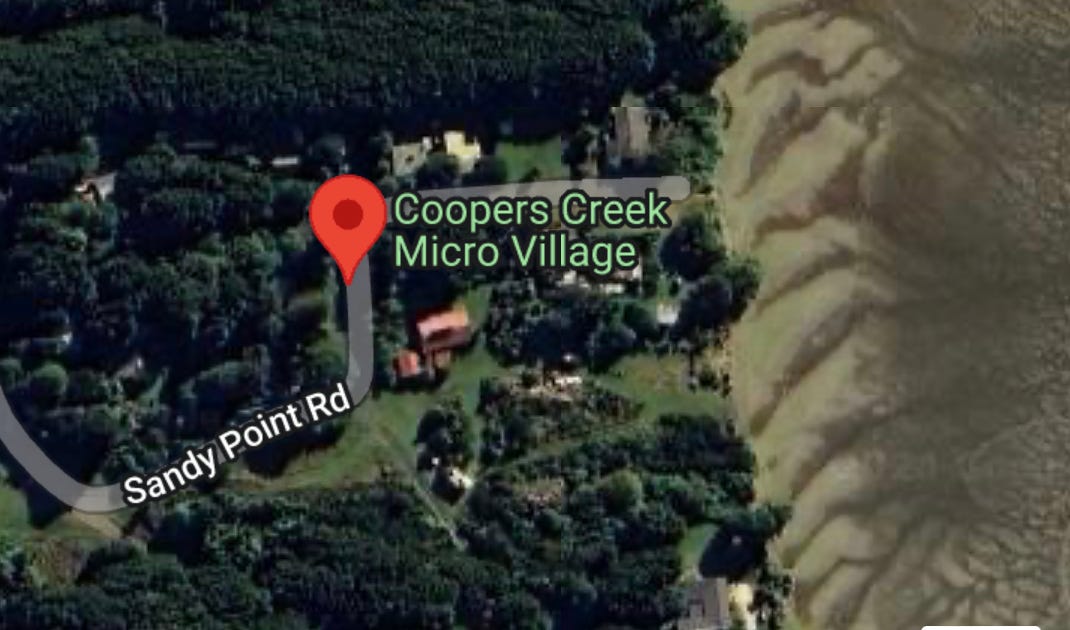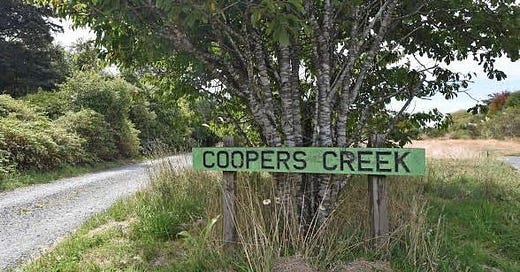Three-hour discussion delves deep into tiny village's battle
For decades now those at the 3.5-hectare Coopers Creek village at Sandy Point have been in a running battle with the Invercargill City Council.
Enter your email address and get each Tribune edition sent to your inbox.
Coopers Creek has about 26 residents, no reticulated water supply, no power supply, no postal route, or rubbish collection, but it has occupied plenty of the Invercargill City Council’s time in recent years. It all somewhat came to a head on Tuesday. Logan Savory reports.
My head hurts, and I can only imagine how Invercargill’s city councillors, some council staff, and Coopers Creek residents must feel about now.
For decades now those at the 3.5-hectare Coopers Creek village at Sandy Point have been in a running battle with the Invercargill City Council.
Deputy Mayor Tom Campbell says he’s held 22 different meetings over the past 18 months alone in a hunt to try to find a solution to the situation.
On Tuesday it somewhat came to a head at a council meeting.
For a touch over three hours, the focus at that meeting centred on Coopers Creek. Coopers Creek is a village made up of 17 dwellings and has a population of about 26 people.
The village has no reticulated water supply, no power supply, no postal route, or rubbish collection.
The meeting started with Coopers Creek residents stating their case. They wanted some longer-term certainty for themselves, and for Coopers Creek in general, around their right to reside there and their properties.
That was before councillors and mana whenua representative Evelyn Cook went about discussing the situation and voted on what to do.
If I was to provide a blow-by-blow account from start to finish of the three-hour debate, I’d be still typing in months to come.
I’ll flick to what was decided on Tuesday before filling you in with some background to an issue that has similar vibes to 1997 film The Castle.
The council voted on Tuesday to recommend to the Minister of Conservation that the residents of Coopers Creek be granted a 21-year licence to occupy with a right of renewal after seven years, plus another seven-year renewal point.
It was different to the 35-year licence to occupy, with no right of renewal, suggested before the meeting. That 35-year licence to occupy was based on what was recently approved with a similar situation at Taylors Mistake near Christchurch.
The council’s decision to look at a 21-year licence to occupy, plus the two seven-year right of renewal periods, was made to give it the best chance of getting ministerial approval.
So how did we get to this point in the butting of heads between Coopers Creek and the council?
Residents have argued significant increases to their annual fee charges, by the council, have been unfair given the lack of council services they tap into.
And they also said they are rated on freehold land when they instead have a lease to occupy agreement.
But the dispute has been fuelled by more than annual fees.
A small Māori population lived at Sandy Point for several hundred years before the first Europeans reached New Zealand. It’s believed their main village, Oue, was situated where the Coopers Creek settlement is now.
The village, as it is now, stemmed from a move in 1949 to extend the roading network at Sandy Point.
It appears in the 1950s the council then made an effort to establish Coopers Creek through clearing and surveying work to allow for holiday or residential homes.
In 1974 the sites at Coopers Creek were extended from 16 to 24. The last house was built in 1992.

The residents own the houses they reside in but the land those houses sit on is owned by the Invercargill City Council.
In fact, that land - as part of Sandy Point - is regarded as reserve land. That’s where the problems, and effectively the dispute, have come into play.
Sandy Point was previously regarded as a “domain” but the Minister in 1992 approved a plan to change Sandy Point’s status to reserve land.
As a result, Coopers Creek was determined as “non-conforming use”. The term non-conforming use appears to have been a “bone-of-contention” amongst the tension between Coopers Creek residents and the council.
A policy was introduced to gradually phase out the Coopers Creek cribs by “natural attrition”.
Residents believed there has been an ongoing erosion of their rights, as well as a reduced sense of security, as years have passed.
Coopers Creek residents wanted the reserve land status revoked.
They felt that would help provide a solution to move forward, given the council would not be restrained by the Reserves Act 1977.
The majority of Coopers Creek residents are over 65 and the 21-year licence to occupy would provide some certainty.
However, many Coopers Creek residents want future generations to be able to enjoy the micro-village rather than over time Coopers Creek being phased out.








A lot of history there. The village Oue was in this vicinity but was buried by moving sand after the rabbits got established, and the shoreline chanced completely. Hatch's Hill was a bare sandhill 100 years back. The village was possibly on the other side of the hill as this is probably where the creek ran. The whaling station would have been there as well as they required running fresh water and this is the only creek on the estuary side of Sandy Point.
Great solution!!